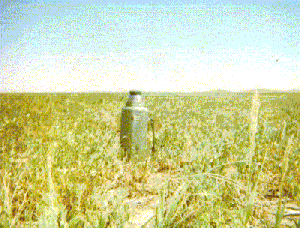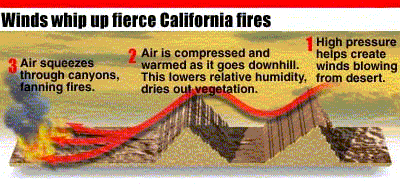 > English > Climate Encyclopaedia > Weather > more > 3. Biometeorology > - Weather and health
> English > Climate Encyclopaedia > Weather > more > 3. Biometeorology > - Weather and health
|
WeatherMore |
More about weather and human health
|
|
People have, since ancient times, associated certain weather conditions with ill health. The connection between weather and health is made especially clear when skin cancer rates increase and during heat waves or extreme cold snaps when old people are much more at risk of death. Illness resulting from temperature extremes and solar ultra-violet radiation are obvious effects of weather on health. Effects which are not so obvious include the influence of weather on our mood, behaviour and general well-being. Researchers realised that medical conditions alone could not explain all illnesses and a new science called Biometeorology was created. This is a combination of many science disciplines, mainly meteorology, medicine and biology. Our gradual detachment from nature and our modern lifestyle, with air conditioners, humidifiers and heaters has made us more sensitive to environmental influences. This is particularly valid when the body is weakened by illness or old age.
|
|
Heat waves appear to have a greater impact on mortality than cold episodes. In the summer of 2003, 180 people died in Paris, France on one day alone as a result of the abnormally high temperatures. Several thousand people died during the heat wave that summer.
|
Humidity has an important impact on mortality. The more humid it is, the harder it is for our bodies to loose heat by sweating, and this results in further overheating.
|
|
|
Weather-sensitive people often become irritated a day or two before a change in weather and are often miserable when a weather front arrives. Hospital records in the USA show that a greater number of babies are born during this time and headaches and migraines increase. People suffering from rheumatism dread the arrival of cold and damp weather and the dry and dusty inland wind prior to the arrival of a front triggers asthma or aggravates the symptoms and worsens hayfever.
|
Inland dry winds before fronts are called Foehn in the Alpine regions of Central Europe and Chinook and Santa Ana in the Rocky mountain regions of Canada and the USA. Some Swiss courts even allow the negative effects of these winds to be used as a mitigating factor in some crimes. The University of Calgary in Canada has substantiated the claims of many migraine sufferers that the Chinook is their main trigger.
|
|
|
|
 |
|
7. Major types of impact change and stratospheric ozone depletion on human health (WHO/WMO/UNEP-Task Group, 1996). Click on the diagram for a better view.
|
About this pages:author: Sándor Szalai - Hungarian meteorological service |
|
|
|






